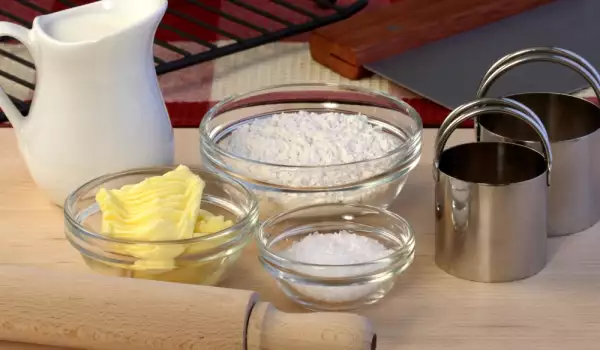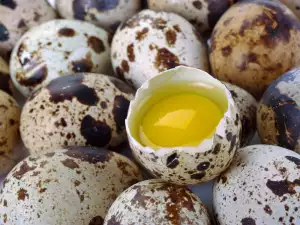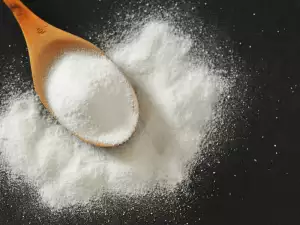Baking powder is probably the most popular rising agent that housewives all around the world use to prepare puffed, tasty and pleasing in appearance bread, etc.
Baking powder is a white powder composed mainly of soda for bread and citric acid, usually in a ratio of 2:1. Has the ability to increase the volume of dough that we prepare. This is due to the interaction between the baking soda, which is a basic/alkaline medium, and the acid of acid which, after a joint reaction, will generate carbon dioxide.
Carbon dioxide is those well-known bubbles that turn bakeries into fluffy pleasures of the palate. All this takes place in the presence of a separator, which prevents the two substances from becomming too active and be mixed and react.
Unlike yeast, wherein the case of the fermentation of live microorganisms, baking powder is based only on chemical reactions. In principle, an ordinary baking powder must always contains soda and citric acid at a ratio of 2:1, but often there are other additives such as some type of starch (maize), and sometimes even vanilla.
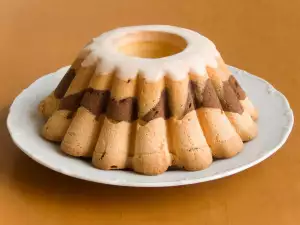
The story of the archetypical risers can be traced back to the mid 18th century, but the mass of baking powder such as we use today came into use in the early twentieth century. While risers have changed little over the past 100 years, manufacturers are always looking for new ways to achieve greater profits.
Perhaps the risers of the future may be mixed with other ingredients to enhance the flavor of the final product. It is not impossible to show a special type of baking powder for different types of dough and to focus on different characteristics, such as speed reaction that occurs, aftertaste, or just easier mixing with other products. Furthermore, it is expected in the future, that manufacturers will find even cheaper production methods.
This friend of bakery and confectionery products is only activated in the presence of water or other liquid / moisture in the dough. Then, the acid reacts with the substrate and results in a separation of the large amount of carbon dioxide. The resulting bubbles in the dough pierce it with air and increase its volume during baking.
Composition of baking powder
- Cremotartar (potassium tartrate and monopotassium tartrate), also called 'clean tartar " is obtained by the processing of juices from various fruits, where it naturally occurs. In baking, it experiences acidifying. At home, you can replace it with citric acid or tartaric acid.
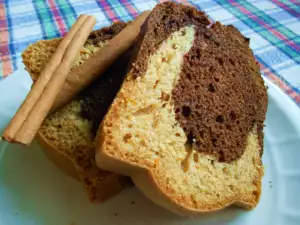
- Baking soda (sodium bicarbonate) - mild bulking agent. In the composition of baking powder, this is the base.
- Maize starch, which is produced by bioplantation-grown corn. In the baking powder composition of starch, it acts as a separator that prevents the dough from premature swelling and slows the mixing of the acid with the base.
The packet of baking powder that you buy at the store for pennies can often contain different ingredients from baking soda and citric acid. If you look at the contents of the back of the package, you can check the presence of baking powder, sodium bicarbonate, sodium pyrophosphate, corn starch, etc. Quite often the back of the baking powder does not write the proportions of the ingredients, or the type of starch used
The regular composition of baking powder is:
63% sodium bicarbonate (5/8)
25% citric acid or potassium tartrate (1/4)
Biostartch 12% (1/8)
Although insignificant, the amount of starch in the baking powder, makes the whole package white powder a source of phosphates, gluten and lactose. People with a problem with gluten and lactose have to use gluten-free baking powder or one that does not contain gluten and phosphate. Gluten-free baking powder contains: cornstarch, cream of tartar, sodium bicarbonate (Natron).
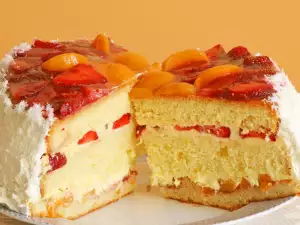
Selection of baking powder and cooking dosages
Overall amount of baking powder, you should use depends on the specific recipe, but with cakes you use about 1 teaspoon baking powder to 1 cup flour. One pack of baking powder 2 tsp (10 g) is sufficient to make 2 cups of flour.
Baking powder is a product with a short shelf life. This means that you should always watch the expiry date printed on the package. After opening, keep it in a dry, cool place in a tightly closed package or container. If you leave the baking powder open, it easily absorbs moisture from the air and eventually becomes unusable.
If you have doubts about the quality of the product, then do the following simple experiment. Dissolve ½ tsp baking powder in ½ cup lukewarm water. Stir and if not effervescent, the baking powder is unfit for use.
Make baking powder at home
It has probably happened that you have not had a packet of baking powder, exactly when it is needed. This normally should not bother us, because baking powder can be prepared by yourself quite easily. All you have to do is to mix equal parts of baking soda and citric acid or in a ratio of 2:1. Instead of citric acid, you can even use vinegar in small quantities.
Recipe for homemade baking powder: 1 tsp baking soda 1/4 tsp citric acid and a small pinch of starch.
